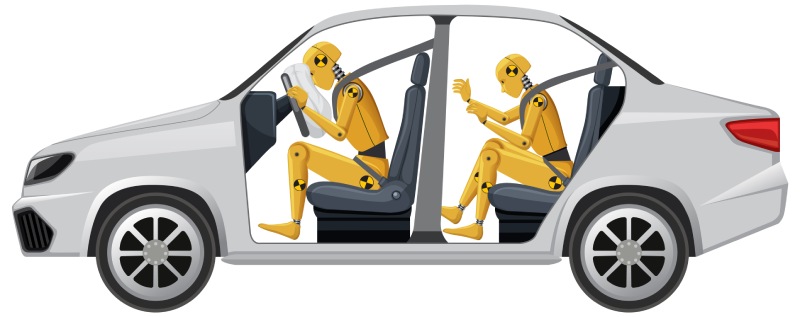An airbag is a driver and passenger system in a car that uses a bag that inflates and deflates rapidly throughout a collision. The airbag cushion, an outer fibrous bag, an inflating mechanism, and an impact sensor make up the system.
The aim of an airbag is to offer soft cushioning and restraining to a vehicle occupant during a catastrophe.
Between the occupants of the car and the gear lever, centre console, body support, canopy, and windscreen, the airbag provides an energy-absorbing surface.
Up to ten airbag modules can be found in modern automobiles, including driver, occupant, corner, seat-mounted, window, B and C-pillar mounted side-impact, elbow bolster, pneumatic seat belt, and walker airbag modules, among others.
A great deal about it is taught in automobile engineering courses.
Why is the Airbag System Important?
The airbag electronic controller unit (ECU) receives critical information from the vehicle’s crash sensors during a collision, such as accident type, direction, and extent of the damage.
The airbag ECU’s collision algorithm uses this information to assess whether the accident event fits the requirements for deployment and then activates different discharge circuits to release one or more airbag units within the automobile.
Airbag module deployments are initiated by a pyrotechnic mechanism that is only utilised once and serves as a secondary restraint method to the vehicle’s seat belt systems. In the case of a side-on vehicle crash, newer corner airbag components consist of pressurised chambers that are actuated.
Airbags are “passive” restraints that work in conjunction with “active” safeties. The airbag is classified as a “passive” system because no activity by the vehicle operator is necessary to initiate or utilize it. Seat belts, on the other hand, are called “active” devices since they must be activated by the automobile passenger. Technical details are well mentioned in automotive engineering courses.
This nomenclature is unrelated to passive and active safety, which are systems aimed to prevent collisions from occurring in the first place and programs built to mitigate the impacts of collisions after they have occurred, respectively.
A car’s anti – lock braking system is an innovative device in this context, while its seatbelts and airbags are passive-safety equipment.
Airbags are currently referred to as supplemental restraint systems (SRS) or supplemental inflatable restraints by the automotive industry, research, and regulatory groups, who used to think of them as a seatbelt substitute.
A diagnostic monitoring unit, a steering wheel connecting coil, an air bag module, an indicator bulb, and collision sensors are all common components of airbags. All of these components are linked together and are powered by the car’s battery.
Well after the batteries have also been disconnected, emergency power is provided to keep the airbags operational. Components necessary for airbag operation have been sitting idle for years. Throughout each startup, an internal self-test is conducted to verify that the airbags are operational.
When the automobile goes over a pothole, a bump, or even a slight impact, the airbag system features a crash sensor that ensures the airbags do not inflate.
The front crash sensors detect rapid decelerations and send electrical signals to an initiator, which activates the automobile. Experts have stated since the introduction of the concept of auto airbags that in order to get the most out of them, airbags must be used in conjunction with seat belts.
